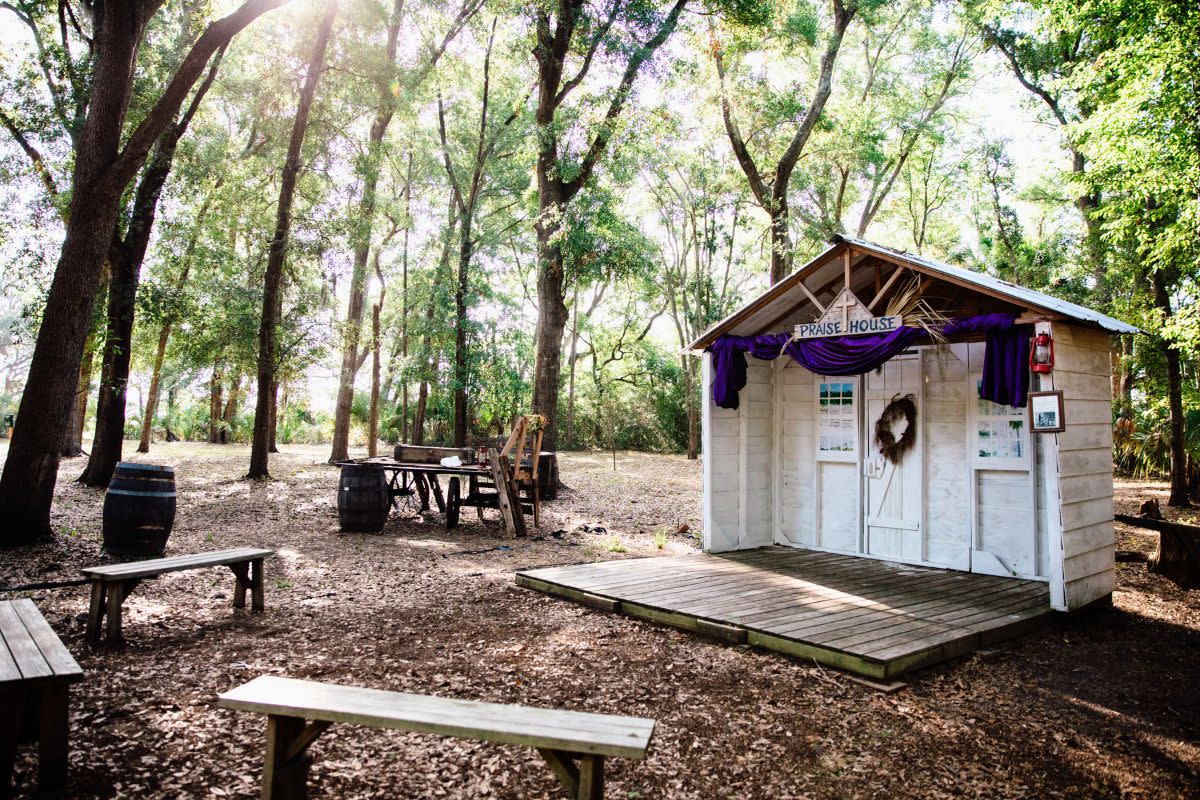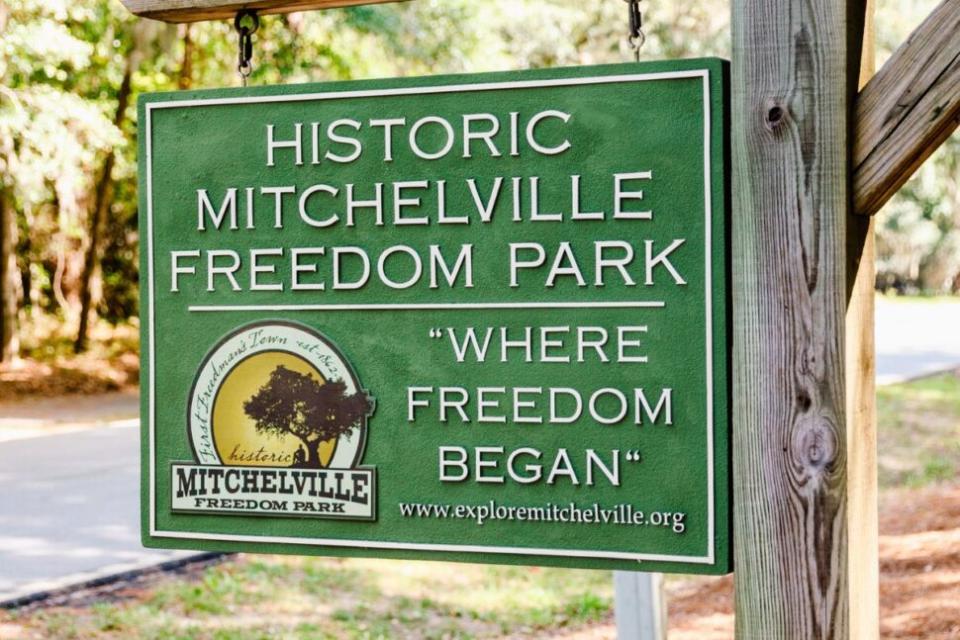The Story of Mitchelville: America’s First Self-Governing Town of Formerly Enslaved People

- Oops!Something went wrong.Please try again later.
At 40 Harriet Tubman Way, an unassuming road in Lowcountry South Carolina, sits a wealth of American history–Black history–that you’ve likely never seen in any textbook. But the historical site, located on the north end of present-day Hilton Head Island, holds the story of our ancestors. The soil of Mitchelville, South Carolina holds stories of resilience, opportunity, and freedom for formerly enslaved people, even before the passing of the Emancipation Proclamation.
How Mitchelville Came To Be

Founded in September 1862, Mitchelville was a product of the Civil War. After success at the Battle of Port Royal in November 1861, the Union Army used the captured Sea Islands as its headquarters. After the defeat, wealthy white residents and plantation owners fled inland in fear. The residents took as many enslaved people with them as they could. However, over 10,000 enslaved people were left behind.
Now liberated, the formerly enslaved residents anxiously awaited for the last Confederate soldiers to withdraw from the island. Shortly after their departure, hundreds of formerly enslaved people arrived, seeking refuge with the Union Army. Once registered at the Union’s headquarters, the new residents would earn wages for work on the base. They performed tasks such as unloading supply ships, housekeeping, waitressing, and working in the commissary, bake shop, garden, and hospital. Because cotton was still king, some residents continued to harvest the crop, getting paid for their labor for the first time.
Union Army Major General Ormsby Mitchel arrived at Hilton Head Island to assume command. He also took on an initiative started at the recommendation of government agent Edward Pierce, The Port Royal Experiment, a strategic effort to improve the conditions of the formerly enslaved. Pierce’s tour of the island resulted in a report that recommended wages, better food, and education for the formerly enslaved. But after overcrowding, poor living conditions, and cases of sexual assault on the military base, General Mitchel directed that a new “negro village” be erected by and for the freedmen and women of the area.
Life and Liberation for the Citizens of Mitchelville
General Mitchel never saw his vision come to life, dying only 6 weeks after arriving from yellow fever. Named posthumously after its founder, Mitchelville became the first self-governing town for the formerly enslaved in America. Life in Mitchelville, while not perfect, was a far cry from the terrors of slavery, serving as a promised land for many.
At the height of the town’s existence, from 1862 to 1868, upwards of 3,000 people called Mitchelville home. The population comprised native islanders, the Gullahs, and those brought to America through the Transatlantic Slave Trade.
Each family was given a quarter-acre lot to build a home along with space to grow crops and outdoor activities. The fully functioning town had its own mayor, organized trash pick-up, and the country’s first mandatory school system. Children ages 6 to 15 were required to receive education, a revolutionary turn for Black people in the South. The town grew to hold 4 schools and 4 churches. By the mid-1870s, the town also had a store, a cotton gin, and a grist mill.
The liberation that Mitchelville carried for formerly enslaved people attracted visits from notable figures, including Harriet Tubman. Tubman herself freed hundreds of enslaved people in South Carolina, many of whom became Mitchelville residents.
Mitchelville functioned as a self-sufficient town for 30 years before its decline began. Freedmen began migrating elsewhere, following the Army for work, or relocating for other opportunities. Former white residents were also returning to the island to reclaim their land, with Black residents often having little recourse.
Mitchelville, as it was once known, eventually disbanded due to family infighting, lawsuits, and a series of land purchases. However, the advancement of Black life in America still found its wings on a modest island off the coast of South Carolina.
Keeping the Legacy Alive

In its heyday, Mitchelville spanned more than 200 acres. Due to development in the area, though, what is known as Mitchelville today comprises 36 acres that stretch from the shoreline of Port Royal to the Hilton Head Airport. Nearly 100 years after Mitchelville disappeared from maps of the area, citizens of Hilton Head came together to preserve and promote Mitchelville’s little-known legacy.
Today, Hilton Head visitors can explore the Historic Mitchelville Freedom Park (HMFP) to retrace the steps of its residents. You won’t find overdone tourist activities or see reenactments of the period. What you will learn though, is how the birthplace of freedom for Black people in America came to fruition.
The multi-year project to restore what remains of Mitchelville began in 2000, obtaining 501(c)3 status in 2010. The site currently houses a few structures that reflect the living conditions of the time. Although only 10 photos of the town exist as far as people know, the spirit of Mitchelville is easily felt when visiting.
Under the leadership of Ahmad Ward, Executive Director for the Mitchelville Preservation Project, future plans for Mitchelville include the addition of several structures. The expansion includes replica homes, a garden, a church and archaic reflection area, an interpretive center, a freedom plaza, a classroom, and an archeological lab.
Throughout the year, HMFP offers exhibitions, events, and guided tours to educate visitors. Since Mitchelville is open to the public, visitors can take a self-guided tour at no cost, but you may miss the color that comes with a guided tour. Private tours are available through HMFP as well as Gullah Heritage Tours, run by the Campbell family who are Mitchelville descendants.

